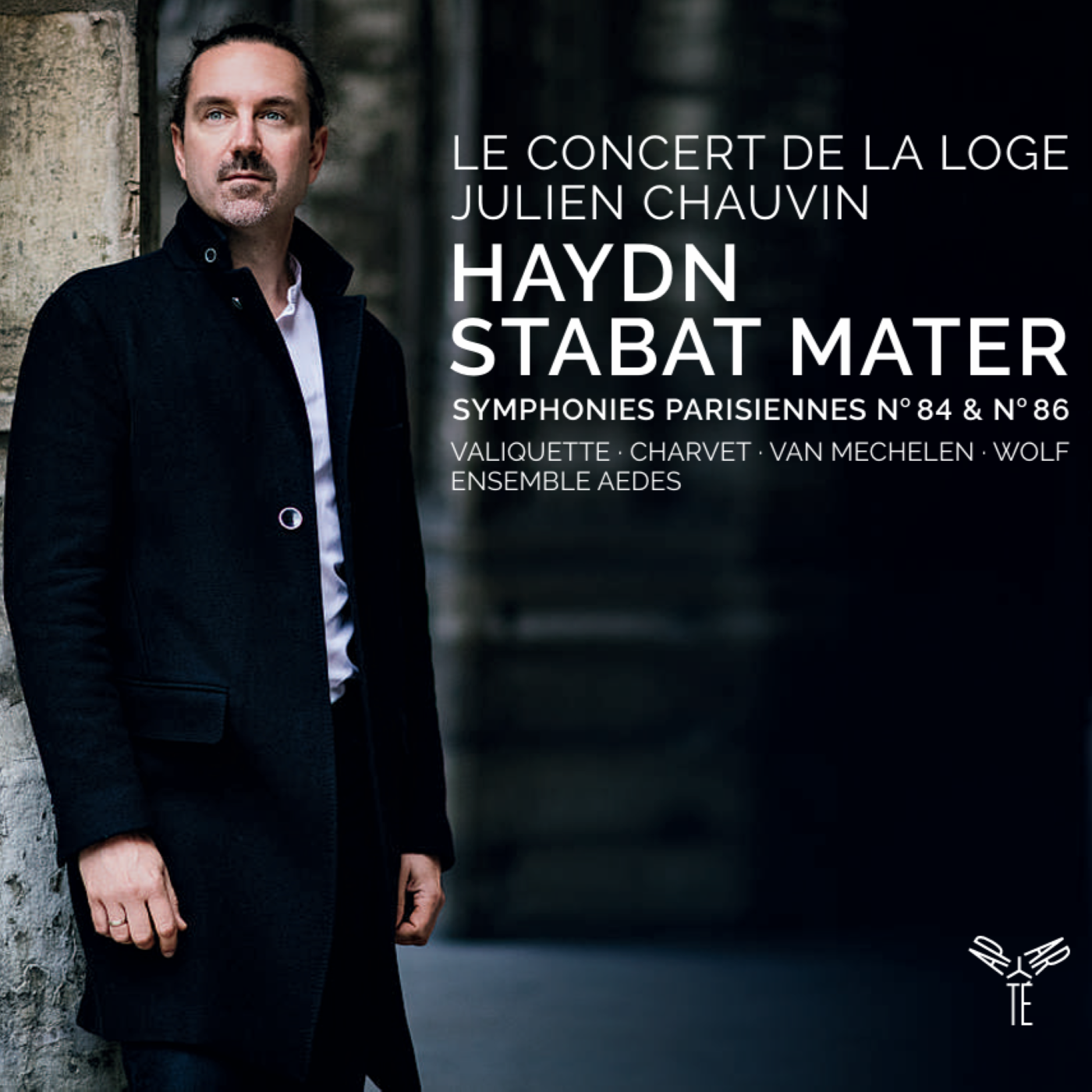Le Concert de la Loge, Julien Chauvin, Florie Valiquette, Adèle Charvet
AP245 - 2CD - 105' - Feb 12, 2021
Playing on period instruments, Le Concert de la Loge and their conductor Julien Chauvin continue their Haydn adventure with a programme consisting of two more of the Paris Symphonies (nos. 84 and 86), together with the now little-known and rarely heard Stabat Mater. Composed in 1767, with the Sturm und Drang movement at its height, the latter was nevertheless one of the most frequently performed of Haydn’s works during his lifetime. Strikingly sober in expression and contemplative in character (“Fac me vere tecum flere”), it also contains moments of exaltation (“Sancta Mater, istud agas”).
JOSEPH HAYDN
CD1
Symphony no.8 4in E flat major Hob.I:84 “La Discrète”
1. I. Largo–Allegro
2. II. Andante
3. III. Menuetto. Allegretto
4. IV. Finale. Vivace
Stabat Mater Hob.XXbis – part 1
5. I. Stabat Mater dolorosa
6. II. O quam tristis et afflicta
7. III. Quis est homo qui non fleret
8. IV. Quis non posset contristari
9. V. Pro peccatis suæ gentis
10. VI. Vidit suum dulcem natum
11. VII. Eja Mater, fons amoris
CD2
Stabat Mater Hob.XXbis – part 2
1. VIII. Sancta Mater, istud agas
2. IX. Fac me vere tecum flere
3. X. Virgo virginum præclara
4. XI. Inflammatus et accensus
5. XII. Fac me cruce custodiri
6. XIIIa. Quando corpus morietur
7. XIIIb. Paradisi gloria
Symphony no.86 in D major Hob.I:86 “La Capricieuse”
8. I. Adagio–Allegrospiritoso
9. II. Capriccio. Largo
10. III. Menuet. Allegretto– Trio
11. IV. Finale. Allegro con spirito



